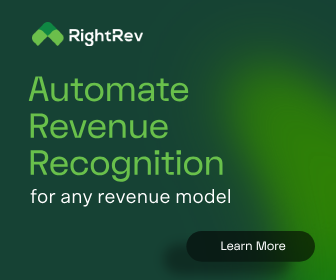As things change, you still need to keep a close eye on the current state of your business. Even the most optimistic and relatively stable businesses need to keep an eye on the underlying drivers and metrics. Knowing this, we would today like to discuss some of the metrics you may not be paying attention to that could point to trouble—or stability.
Over the past few years, APQC has been contributing a “metric of the month” segment to CFO Magazine, highlighting statistics from the firm’s Open Standards Benchmarking® database to help finance and accounting leaders to understand what matters and what could be better.
Whether it’s something like the average cost of an invoice, the time your finance staff spends on various tasks, or the cycle time for monthly close, this monthly segment delivers a variety of insights for companies looking to improve their results. However, with the recent outbreak, lockdown, and uncertainty placed on businesses in the last few months, their articles focused on the keys to survival.
Metrics to Measure in the Return to Normal Process
So, what should you focus on? How can you look to improve? Here are just some of the metrics you should look at as we ramp up for a return to normal.
1. Uncollectable Balances as a Percentage of Revenue
How much bad debt does your company hold? It’s a question that matters now more than ever. Money is tight, losses could be valuable in your tax strategy, and it’s important to know what percentage of your revenue is considered uncollectable. Tracking this metric will help you to identify bad debt before it becomes bad debt, compare it to where you stood months ago, and take steps to improve collections.
How Big of a Difference Does Half a Percent Make?
Through its Customer Credit and Invoicing Open Standards Benchmarking survey, APQC found that uncollectable balances represent 0.51% of revenue or less for top performers, while bottom performers see uncollectable balances of 0.88% of revenue or more.
While the numbers likely don’t seem large, put it in real terms and the picture looks bleaker. On a billion in revenue, the move from bottom performer to the median could save you $2 million, according to APQC. Moving from bottom performer to the top? $4 million.
Learn more about speeding up receivables and bringing in more cash in our recent article on the topic.
2. Total Cost to Reward and Retain Employees
You’ve probably said the old cliché, “Our people are our best asset.” Well, now is the time to walk the walk. Layoffs and furloughs have probably cut into your company morale. However, with an ever-present accounting skills gap, top performers might be keeping their options open. As discussed in their July Metric of the Month, APQC noted that companies with the resources available should consider a somewhat counterintuitive approach to their people problems.
One Area to Keep Intact: Rewards and Retention
“If you have the finances to do so, you should leave your employee reward and retention spending intact and make investments in keeping morale high. Not every company will be in a position to do this, but for those that can, it can make all the difference for struggling employees.”
In their Reward and Retain Employees Performance Assessment, APQC found that companies in the 75th percentile spend the most on this process at $0.53 per $1,000 revenue. Companies within the median spend $0.33 per $1,000 revenue, while those in the 25th percentile spend $0.17 or less.
Keeping morale high during a pandemic and preventing burnout can go a long way in keeping your people productive and confident. Everything from financial assistance for childcare, employee wellness programs, or a gift card to recognize good performance should be considered—even if it’s a small token.
Learn more about keeping your employees motivated, preparing your employees for a return to work, and how to approach HR initiatives with helpful resources from the Controllers Council.
3. Short Term Cash Flow Forecasting
How do you eat an elephant? One bite at a time. No matter how confident or unconfident you may be in the future, you need to focus on rolling forward—day by day, week by week, month by month. But as noted in the June Metric of the Month, short-term cash flow forecasts are equal parts art and science.
How Long Does It Take to Build a Short-Term Forecast?
Yes, you’re going to need to calculate the cash flow inputs and outputs, but you’re also going to need to herd cats trying to get everyone on the same page—especially when there’s no in-person collaboration.
To build out a forecast, you first need to understand how long it takes to build out said forecast. According to APQC’s Open Standards Benchmarking® database, top performers on this metric can develop a short-term cash-flow forecast in about two hours and fifteen minutes or less, while bottom performers take four hours or longer to generate theirs.
A realistic, accurate understanding of your cash inflows and outflows is the bedrock of an efficient short-term cash flow forecast, and being able to generate this forecast quickly will provide flexibility and agility needed to keep your business running.
Ready to learn more? Read our article titled Controller’s Guide to Managing Cash During a Crisis to understand the rapid response processes needed to steer your way through a crisis.
Add up the Numbers—It Pays to Join the Controllers Council
Though these just scratch the surface of the metrics you need to track on a daily basis, there are many more ways to get ahead of the curve. We launched the Controllers Council as a community and forum for controllers across the US to discuss and benchmark against similar companies. With just a small annual investment, you can join the discussion and get a lot more benefits along the way. Ready to learn more? Click here to read all the membership benefits.




